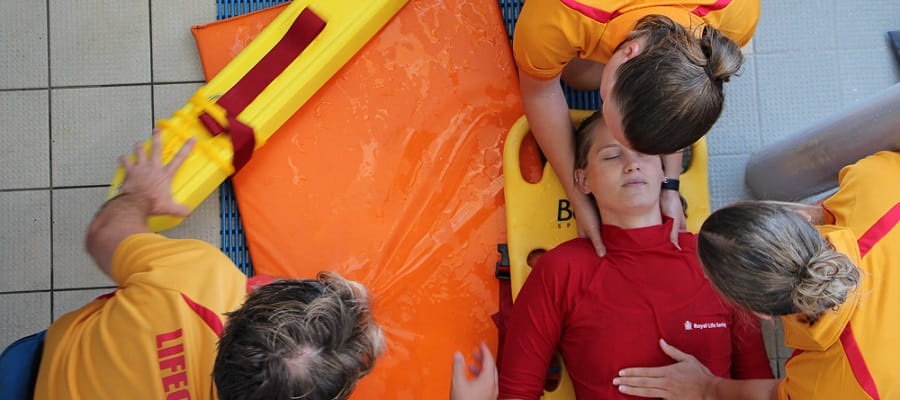
Nearly all aquatic spinal injuries occur in the neck area. This is most often due to impact of the head on a hard surface such as the pool floor, or even the water itself if diving from a height.
A spinal injury must always be suspected in a person found unconscious in shallow water, unless the circumstances leading to loss of consciousness were observed and a neck or back injury deemed highly improbable.
Likewise, an unconscious person found in deep water within the immediate area of a dive board or tower must also be suspected of having a spinal injury and treated as such. Permanent spinal damage can occur if pressure is placed on the cord from movement, swelling, or protruding bone and extreme care must be taken to prevent any further movement of the head or spine.
However, A.B.C. always takes priority.
Always follow the DRSABCD action plan and remember that nothing is more important than maintaining the airway and ensuring breathing. If the casualty is lying face down, they must be turned (using a Vice Grip or Extended Arm Rollover) to keep the mouth and nose clear.
If CPR is required, the casualty must be removed from the water as quickly and with as much care as possible, to commence CPR on land. With only one rescuer, immobilisation may not be possible if resuscitation is needed.
On removal from the water to provide CPR:
- Resuscitation to be commenced as soon as possible
- If breathing resumes but person still unconscious, place in the recovery position and monitor breathing.
- If consciousness returns, maintain in a comfortable position but DO NOT MOVE the casualty. Permanent paralysis and other serious injury may result from movement.
- Maintain body temperature and provide continual reassurance to avoid shock.
If removal of an unconscious, unbreathing person from the water is not possible, breaths can be given (at the side of the pool/as soon as possible) through mouth to nose breathing. Immobilisation in the water is best achieved using the vice grip technique.
If the person is breathing and lying face up in the water, the head and neck must be supported. The casualty should only be moved by rescuers specifically trained in spinal injury management and should only be otherwise attempted if there is no chance of emergency services arriving within a sufficient time period.